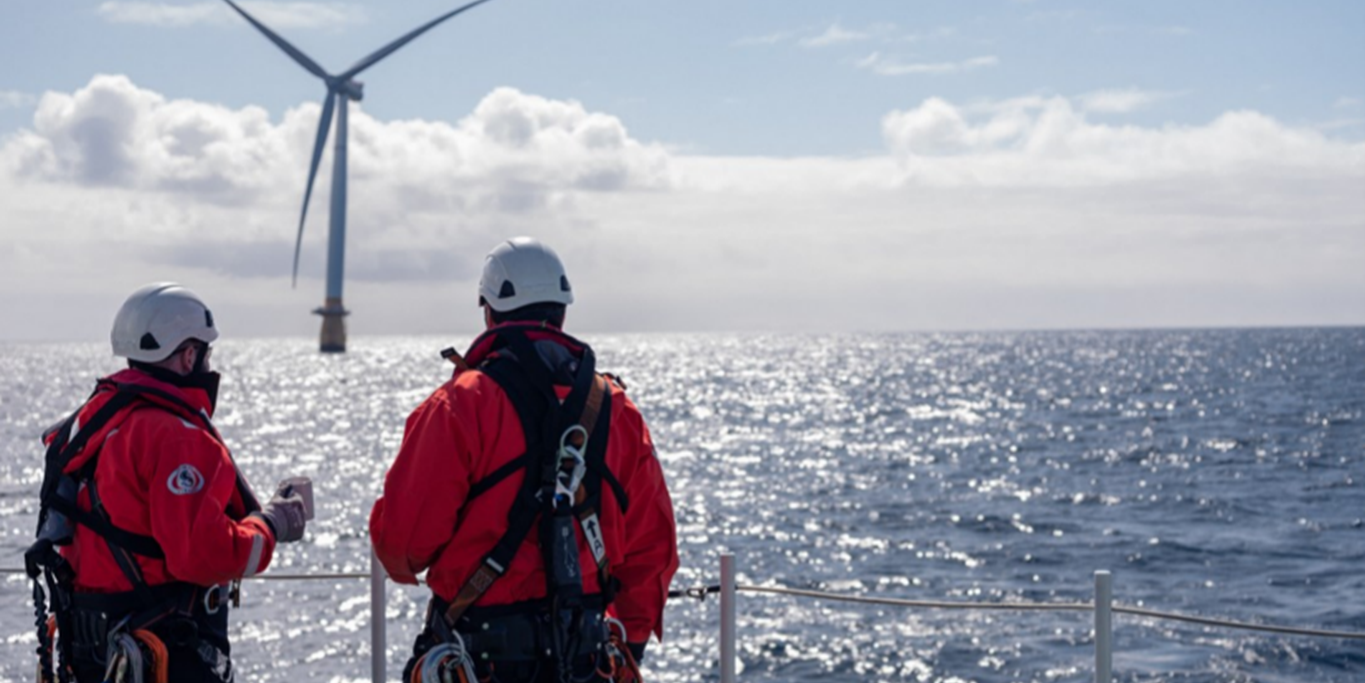Equinor leads the global floating offshore wind industry

Norwegian state-owned energy company, Equinor is leading the global floating offshore wind industry through several new milestones for floating offshore wind in 2022.
In December, Equinor was selected as a provisional winner for a 2-giga watt commercial-scale floating offshore wind energy development opportunity at a lease area off the coast of California, USA, and continues to lead the way in growing the US offshore wind industry. In November, the world's largest floating offshore wind farm, Hywind Tampen produced its first power from the floating wind farm located in the North Sea. The power was delivered to the Gullfaks A platform in the North Sea. Lastly, 2022 marks five years of operations at world’s first floating wind farm, Hywind Scotland, located off the coast of Peterhead, Scotland. It is the world’s best-performing offshore wind farm, achieving a capacity factor of 54% over its five years of operations with high safety standards resulting in no loss time injuries during its operation.
Equinor wins commercial-scale lease for 2GW floating offshore wind power plant in California, USA
Equinor won a bid to a ~2GW floating offshore wind power lease located on the coast of Western California, USA, in December. This can support a commercial scale floating offshore wind farm development project with the potential to supply power to about 750,000 households.
The offshore wind lease span 80,060 acres off the coast of Morro Bay in California, and contributes the scale needed to optimize value across our US and Asia-Pacific portfolio.
“Achievements in 2022 confirm Equinor’s leadership in floating offshore wind around the world and its strong commitment to supplying renewable energy,” said Jacques-Etienne Michel, Country Managing Director of Equinor Korea. “These milestones show that Equinor has the technology, experience and scale to extend the value of offshore wind around the world,” he added.
Hywind Tampen, the world's largest floating offshore wind farm started producing electricity
Equinor produced its first power in November at Hywind Tampen, the world's largest floating offshore wind farm. The first electricity generated at sea with depths of 260 to 300m, 140km off the coast of Norway, was immediately supplied to the offshore platform of Gulfaks A, an oil and gas field located offshore. Hywind Tampen will reduce CO2 emissions from the Snorre and Gullfaks fields by around 200,0000 tonnes per year.
Hywind Tampen is the world's first case of supplying electricity produced by offshore wind power to an oil and gas offshore platform. It has a total installed capacity of 88 MW, seven of the eleven turbines started operating with a capacity of 60 MW in 2022. The remaining four wind turbines that have been assembled will be installed at Hywind Tampen to generate electricity in 2023, when seasonal weather conditions improve to allow construction to resume. With the full operation of Hywind Tampen in 2023, Equinor will operate about half of the world’s total capacity of floating wind.
Hywind Scotland, the world's first floating offshore wind, achieves a capacity factor of 54% over its first five years of operations
Equinor has been running the world's first floating offshore wind farm, Hywind Scotland, generating power with an average capacity factor of 54% since 2017 with high safety standards marking five consecutive years without incidents whilst operating it. This proves the high, power generation efficiency of floating offshore wind.
Hywind Scotland has a capacity of 30 MW generated by 5 turbines, utilizing the Hywind floating spar-substructure concept. The wind farm generates enough electricity to power the equivalent of 34,000 UK homes.
Hywind Scotland's five years of operational experience goes beyond power generation efficiency. Through these years, Equinor has also secured an operation maintenance model suitable for floating offshore wind power even in challenging conditions. It is a hybrid operation and maintenance (O&M) model that involves upskilling onshore wind technicians to maintain turbines in an offshore, floating environment.
Latest News

Equinor Fourth Quarter and Full Year 2024 Results
Equinor delivered adjusted operating income* of USD 7.90 billion and USD 2.29 billion after tax in the fourth quarter of 2024. Net operating income was USD 8.74 billion and net income was USD 2.00 billion, leading to adjusted earnings per share* of USD 0.63.

Equinor to present at GWEC APAC Wind Energy Summit 2024 in Songdo
- Participation of 10 global experts from Equinor across development, supply chain, and operational areas
- Supporting Korea’s renewable energy transition by leveraging global offshore wind leadership

Equinor reaffirms intention to invest in Korea’s renewable energy market
- Investment registration completed at the 2024 Invest Korea Summit following the investment declaration made in 2023 hosted by President Yoon
- Equinor seeks to support the development of Korea’s offshore wind industry and advancing the energy transition